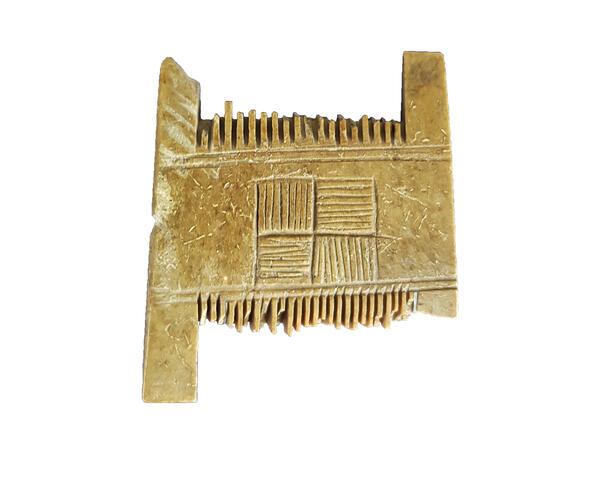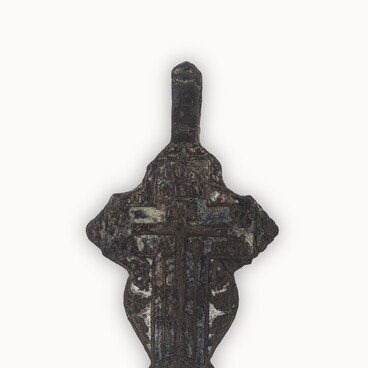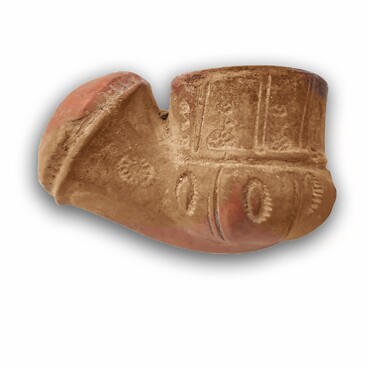The Kursk Regional Museum of Archaeology holds an ancient hair comb. The bone comb decorated with a geometric ornament was discovered during the expedition of the Kursk Museum of Archaeology on the territory of the settlement of Gochevsky archeological complex (Belovo district of Kursk region). Almost all the teeth on both sides of the comb have not been preserved to our time. But the form itself is clearly traceable. Since the artifact was found outside the archeological deposit, it is dated broadly, from the late 10th to the 13th centuries. Such objects are very common in the dig sites of ancient Russian towns. During the excavations of Veliky Novgorod alone, over 1000 combs were already discovered. Given the clear dating of the layers in which the combs were found, it became possible to study their evolution.
In every major urban center, comb makers were local artisans. The technology of making bone combs was undoubtedly more complicated than that of wooden ones. Before a piece of horn or bone was cut off, it was subjected to special treatment: steaming in hot water, straightening and removing the inner part. This manufacturing technique is well known from artisanal crafts, which survived until the beginning of the 20th century. Drawing on archaeological data, we were able to reconstruct the last stage of manufacturing combs from bone or wood. The middle of each side of the workpiece was marked with two parallel lines, after which cuts were made, sparse ones on the one side and denser ones on the other. The cuts were made in a two-sided way: the plate was cut through to the middle of the tooth first on the one side, and then on the other one.
In the territory of Old Russia in the 9th — first half of the 11th centuries, one-sided combs were the most common. They were 5–8 cm long and were made both of one bone plate or several, sometimes up to four pieces. The combs often have various elements of decoration in the form of straight lines, patterns or circular ornaments.
At the end of the 10th century, one-sided combs were replaced by double-sided whole combs of rectangular or trapezoidal shape. The earliest objects of this kind were almost rectangular in shape, they had been around until the beginning of the 13th century.
In every major urban center, comb makers were local artisans. The technology of making bone combs was undoubtedly more complicated than that of wooden ones. Before a piece of horn or bone was cut off, it was subjected to special treatment: steaming in hot water, straightening and removing the inner part. This manufacturing technique is well known from artisanal crafts, which survived until the beginning of the 20th century. Drawing on archaeological data, we were able to reconstruct the last stage of manufacturing combs from bone or wood. The middle of each side of the workpiece was marked with two parallel lines, after which cuts were made, sparse ones on the one side and denser ones on the other. The cuts were made in a two-sided way: the plate was cut through to the middle of the tooth first on the one side, and then on the other one.
In the territory of Old Russia in the 9th — first half of the 11th centuries, one-sided combs were the most common. They were 5–8 cm long and were made both of one bone plate or several, sometimes up to four pieces. The combs often have various elements of decoration in the form of straight lines, patterns or circular ornaments.
At the end of the 10th century, one-sided combs were replaced by double-sided whole combs of rectangular or trapezoidal shape. The earliest objects of this kind were almost rectangular in shape, they had been around until the beginning of the 13th century.




